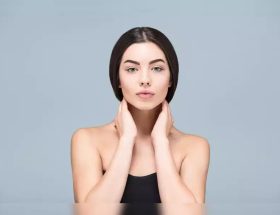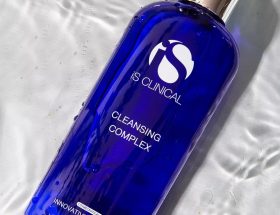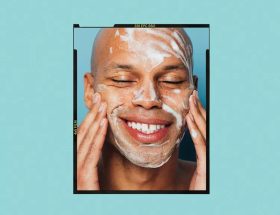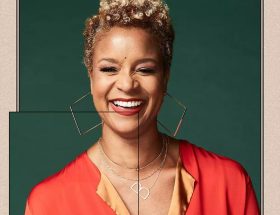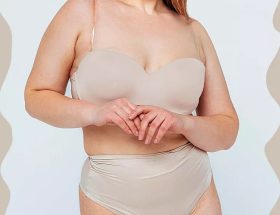Nodular Acne Is Difficult to Treat Here’s Why
Pimples are bad enough—but when they’re painful, it can feel like adding insult to injury. And that’s just one reason nodular acne can suck. Unlike the kind of zits most of us are used to—the ones we try to resist squeezing and picking at—nodular acne goes much deeper, literally. Nanuet, New York–based, board-certified dermatologist Heidi Waldorf, MD, likens nodular acne to icebergs: “It’s solid above and below the skin,” she explains. Because nodular acne is completely under the skin, it’s important to see a dermatologist to make sure you’re getting the right treatment.
But first, a bit more on how to know whether your acne is actually nodular acne.
DIY Turmeric Face Mask To Combat Acne
What Is Nodular Acne and What Does It Look Like?
According to New York City–based, board-certified dermatologist Morgan Rabach, MD, “nodular acne is a severe, deep form of acne where the clogged pore progresses into a bump that is completely under the skin.” What this means is that the bump is not communicating with the surface of the skin—so it’s impossible to simply extract this kind of pimple. “It’s usually a bump the patient can feel, it’s deep into the dermis and is painful most of the time (because that’s where the nerves hang out),” Rabach explains.
Nodular acne can appear the same color as skin, but more often becomes red and inflamed—a result, Rabach explains, “of your immune system attempting to break up and absorb the dead skin, sebum, and other inflammatory cell debris that collects under the skin.”
Because nodular acne lives in the dermis, in the same place where our collagen is, it’s often accompanied by scarring. “What happens is the nodules push the collagen aside, and inflammation surrounding the nodule also changes or damages the collagen,” Rabach notes. When the stubborn bumps finally go away, they leave indentations—aka acne scars.
What Causes Nodular Acne?
It can be hard to pinpoint the cause of nodular acne, Rabach explains. “Idiopathic nodular acne is by far the most common,” she says. “This means we really can’t point a finger at an underlying cause, and so we say it’s a mixture of genetics and environment.” If one of your parents has dealt with acne nodules, you’re more likely to as well.
Many of the other causes of nodular acne, according to Westport, Connecticut–based, board-certified dermatologist Rhonda Klein, MD, have to do with “keeping the pore open and clear for natural, healthy function.” Below, she explains these potential causes.
Excess sebum: Nodular acne can occur when “too much sebum clogs up a pore and creates an ideal environment for bacteria to fester.”
Dead skin cells: “Similarly, if dead skin cells become backlogged within the pore, they mix with sebum and bacteria and become infected nodules.”
Bacteria: “The presence of P. acnes bacteria will lead to acne. When that bacteria is present in a closed, clogged pore, you will see it manifest as nodular acne.”
Androgen hormones: Hormones can also be a trigger. “Hormonal fluctuations can trigger acne, but shifts in the androgen or ‘male’ hormones are specifically linked to nodular outbreaks.” This is because these male hormones increase sebaceous oil gland production. This, in turn, leads to oil building up in the pores.
According to Klein, most often more than one of these causes occurs and leads to nodular acne. Fortunately, she notes, “most of the treatment modalities will complement one another.”
Finally, Rabach notes, “certain medications can lead to nodulocystic acne like lithium and oral steroids. Steroids act like stress hormones, leading to increased oil production. Something like lithium causes inflammation leading to increased oil production.”
How Is Nodular Acne Treated?
The good news is that dermatologists know that when they see nodular acne, oral medication is required. Rabach notes: “It is a little more involved because it requires oral medication. It’s definitely a type of acne where it’s better to see a dermatologist than take a DIY approach. I like to think of it this way: Topical medication can permeate the epidermis only so far. Nodular acne hides beneath where a cream can get. You need oral medication, and thankfully we have medication that works!” If you suspect you might have nodular acne, make an appointment with a board-certified dermatologist right away—the faster you treat the nodules, the more likely you will be able to avoid dealing with scarring afterward.
Oral Medications
Spironolactone: This acne-fighting drug works by “binding to testosterone receptors, blocking testosterone from activating oil in the sebaceous glands,” Rabach explains. Less oil means fewer blocked pores, and therefore less acne.
Birth control: By regulating female hormones, birth control “prevents spikes in androgens (aka male hormones). Keeping testosterone low really helps reduce overproduction of oil.”
Antibiotics
“Antibiotics have anti-inflammatory effects and also kill propionibacterium acnes (aka P. acnes), which can lead to breakouts.”
Accutane: “This is a derivative of vitamin A, which permanently decreases the size and activity of oil glands. Without oil around, the bacteria that contribute to acne decrease.”
Topical medications: Most often, Rabach notes, a topical medication is used in tandem with the oral medication. “An oral medication can really help reduce the number of new deep cysts that appear from the inside out. Use of topical medications in conjunction can make active acne spots heal faster and reduce pigmentation and scarring,” she says
Retinol: The standby hero ingredient works by reducing sebaceous gland activity.
Topical Antibiotics
Topical antibiotics can help “reduce inflammation and also reduce P. acnes, the main bacteria that contributes to inflammatory acne.”
Salicylic acid: Salicylic acid is a keratolytic, which means it “sloughs off the dead skin that both lines the pores and the outside of the skin to help reduce clogging.”
Benzoyl peroxide: Benzoyl peroxide helps reduce inflammatory cells, kills P. acnes bacteria, and helps reduce oil.
In-Office Treatments
Finally, as Rabach notes, in-office treatments and interventions can also help address inflammation, heal nodules, and address scarring left in their wake.
Chemical peels: “Chemical peels reduce dead skin around hair follicles and reduce oil production.”
Intralesional steroids: “Injecting intralesional steroids reduces inflammation surrounding nodular acne.”
Incisions: “An incision releases trapped white blood cells, propionibacterium acnes, oil, and keratin in nodules.”
Microneedling: “Microneedling triggers collagen regeneration after acne scarring, but also helps skin regenerate faster overall.”

